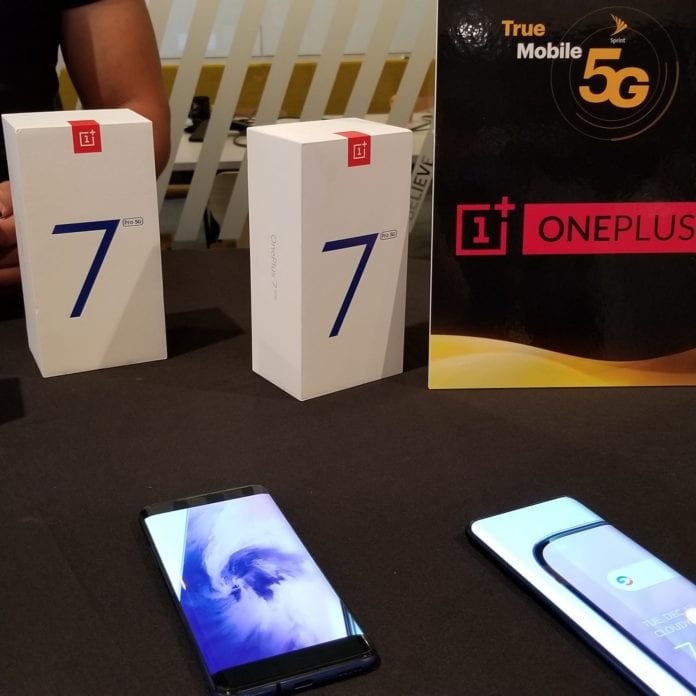Regarding T-Mobile US merger, Sprint VP says the current focus is technology, not strategy
Editor’s note: Qualcomm Technologies Inc., provided travel, lodging and other consideration for the Snapdragon Summit.
HAWAII–Although a planned merger with T-Mobile US is in a bit of a holding pattern at the moment, Sprint continues to execute on its 5G strategy with comparatively extensive coverage available in nine markets, including Los Angeles, New York City, Chicago and Washington D.C.
“A year ago, we were talking about what we aspired to deliver in 2019, which was basically our 5G commercial network,” Ryan Sullivan, Sprint’s vice president of product engineering, told RCR Wireless News this week at Qualcomm’s Snapdragon Summit in Maui. “I think we ended the year in a really good spot.”
Sprint’s 5G strategy is also an LTE strategy. The carrier is putting its extensive 2.5 GHz spectrum holdings into service and using that capacity for both LTE and NR by splitting 64T, 64R massive MIMO radios between the two generations of cellular. Sullivan referred to this dual-connect approach as the “secret sauce.”
With four 5G devices in-market, including a mobile hotspot (more on that later), Sullivan said he’s “really pleased with the results” and noted that users are getting a “differentiated experience from our competitors” in that 2.5 GHz provides a nice balance of throughput and wide-area coverage as opposed to the roughly 2 Gbps but limited availability of the millimeter wave-based networks Verizon and AT&T are operating.
“We set out to deliver in the nine markets,” Sullivan said. “I think by the time we finished our launch by mid-summer, we were at about 11 million people covered. Now we’re at 16 million covered.”
Asked if the take rate for 5G was significant enough at this point to open up additional capacity on the LTe network, Sullivan said, “We will get there and that’s really the business case behind 5G–cost per bit per hertz. It’s a more efficient technology. In order to realize the capex and opex savings, you have to turn down legacy. Today we’re seeing a savings by the fact that we’re moving traffic off of end-of-life network technologies. We’re able to turn down opex intensive networks that are in our past.”
Back to the 5G hotspot, the HTC 5G Hub. “What we’re finding,” Sullivan said, “is a lot of [subscribers] are using it for home Wi-Fi replacement. Over 65% of data usage on these devices is connecting to gaming consoles. Then we’re seeing video streaming through a smart TV. They’re setting it up in their home and they’re either using it as a primary network or using it to offload.”
Couldn’t that be a problem in terms of network load? “If not implemented the right way, it could be. But we have so much capacity on 2.5 GHz. As long as we make sure we’re managing capacity and managing backhaul and managing the service surgically based on where we do have the capacity available, it could be a really good line of business.”
5G as a home broadband replacement is a hot topic. It’s how Verizon went to market with its fixed wireless 5G Home service, it’s something AT&T is exploring and it’s also on T-Mo’s radar.
Obviously Sprint’s learnings around how people are using 5G in their homes would be informative as T-Mo ideates what a residential offering would look like, but Sullivan said the two carriers are still “operating as competitors. Those are things that we just can’t share with each other. We’re at arm’s length with them. The focus is on what the integration plan looks like–much more of a technology discussion, much less of a strategic discussion.”
During the Snapdragon Summit, Qualcomm unveiled its premium tier Snapdragon 865 5G mobile platform as well as its Snapdragon 765 mid-tier 5G platform. By expanding the reach of 5G throughout its portfolio, Qualcomm is enabling a major scale-out of 5G in 2020 as operators tap technologies like dynamic spectrum sharing to rapidly expand coverage.
“As we shift to 2020,” Sullivan says, “the focus for us is taking 5G into the mainstream from a device perspective. Now we’re actually looking forward to a day where our customer base nationwide, down into the mid-tier, can take advantage of 5G. I feel 100% confident knowing what’s coming in 2020.

